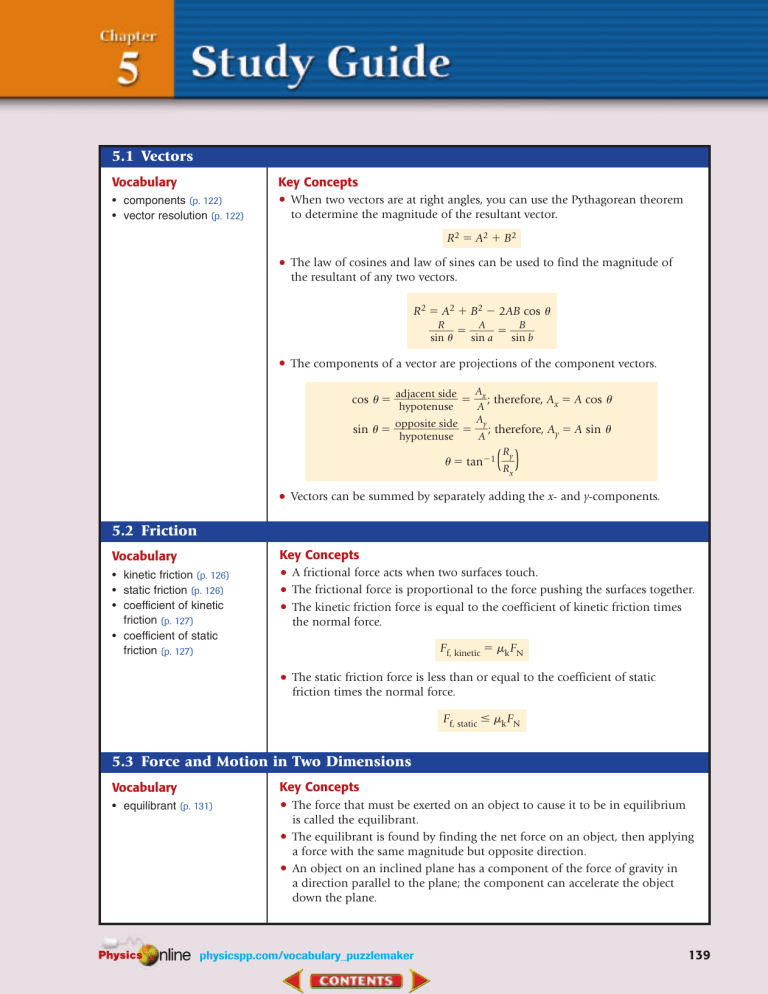
5.1 Vectors Vocabulary Key Concepts • components (p. 122) • vector resolution (p. 122) • When two vectors are at right angles, you can use the Pythagorean theorem to determine the magnitude of the resultant vector. R2 A2 B2 • The law of cosines and law of sines can be used to find the magnitude of the resultant of any two vectors. R2 A2 B2 2AB cos R A B sin sin a sin b • The components of a vector are projections of the component vectors. A A A y opposite side sin ; therefore, Ay A sin hypotenuse A Ry tan1 Rx adjacent side hypotenuse cos x ; therefore, Ax A cos ( ) • Vectors can be summed by separately adding the x- and y-components. 5.2 Friction Vocabulary Key Concepts • kinetic friction (p. 126) • static friction (p. 126) • coefficient of kinetic friction (p. 127) • coefficient of static friction (p. 127) • • • A frictional force acts when two surfaces touch. The frictional force is proportional to the force pushing the surfaces together. The kinetic friction force is equal to the coefficient of kinetic friction times the normal force. Ff, kinetic k FN • The static friction force is less than or equal to the coefficient of static friction times the normal force. Ff, static k FN 5.3 Force and Motion in Two Dimensions Vocabulary Key Concepts • equilibrant (p. 131) • • • The force that must be exerted on an object to cause it to be in equilibrium is called the equilibrant. The equilibrant is found by finding the net force on an object, then applying a force with the same magnitude but opposite direction. An object on an inclined plane has a component of the force of gravity in a direction parallel to the plane; the component can accelerate the object down the plane. physicspp.com/vocabulary_puzzlemaker 139



